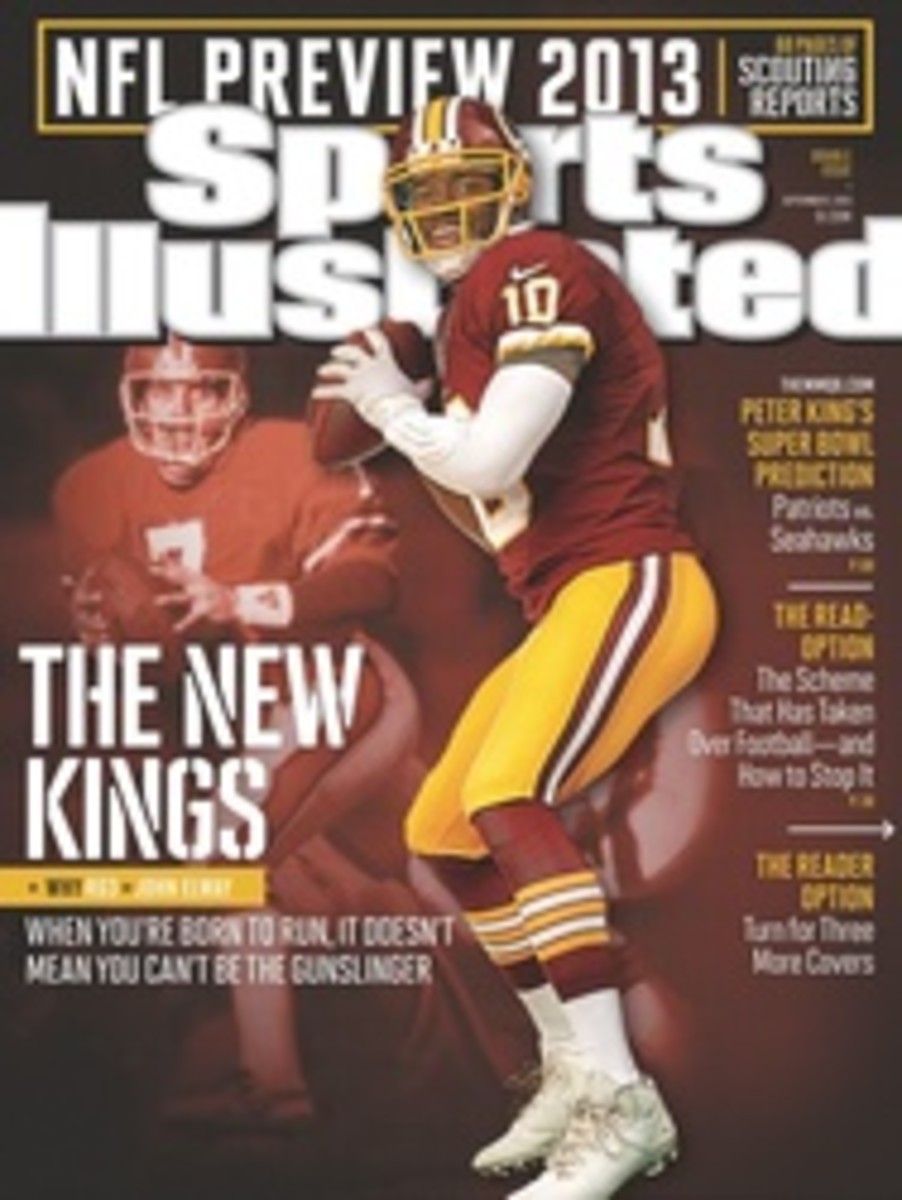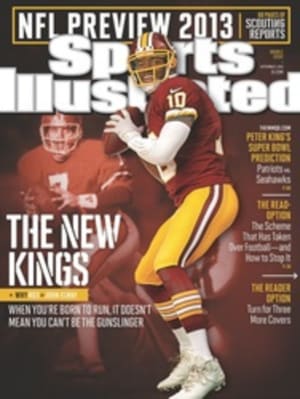
4 Green Bay PACKERS
CLAY MATTHEWS and the Packers' defense will be tested immediately, opening on the road against the 49ers and facing the same Colin Kaepernick--led offense that embarrassed Green Bay at Candlestick Park in an NFC divisional playoff last January. In San Francisco's 45--31 victory, the Packers' defense was completely overmatched, as the rookie quarterback read-optioned them into the ground, rushing for 181 yards as the Niners rolled up 579 yards of total offense.
For a team with four consecutive playoff trips, including a Super Bowl XLV championship, and whose gaudy 47--17 regular-season record since the start of the 2009 season is tops in the NFC, the defeat served a useful purpose by forcing Green Bay to carefully examine its priorities. Yes, the team signed franchise quarterback Aaron Rodgers to a five-year, $110 million extension, giving him the highest per-season salary in NFL history. But the Packers also made Clay Matthews the game's highest-paid linebacker when they sealed a five-year, $66 million deal with the 27-year-old veteran, who is more valuable to them than ever.
The 6' 3", 255-pound former first-round pick is now the face of the Green Bay defense, the first player in franchise history to earn four consecutive Pro Bowl berths at the start of his career, during which he has 50 sacks (third most in the league), including playoffs. "[The extension] showed that the team obviously appreciates and has bought into what I'm all about," says Matthews of his new deal, which could keep him with the Packers through the end of 2018. "I want to continue to help steer this defense in the right direction."
Matthews knows that means there can't be any more disasters such as the one in San Francisco last January. "That read-option offense creates a lot of problems for a defense, and we had to work this off-season on recognizing and being aggressive, attacking against that offense rather than waiting around for them to hit us," he says. "You look at Kaepernick, RG3 and Russell Wilson, and the read-option offense got the best of most teams last year."
Matthews's strength as an edge rusher—he is, in fact, one of the game's best—masks his excellence as a run defender, though he will need more help from the rest of the front seven, whether coordinator Dom Capers goes with a 3--4 or the 2-4-5 he often used last year. The Packers ranked fourth in the NFL with 47 sacks in 2012 and are counting on an even better pass rush that gets production from outside linebacker Nick Perry—a 6' 3", 265-pound first-rounder in '12—who tore a tendon in his left wrist and was limited to only six games (two sacks) last season. The rush defense, however, was an issue long before Kaepernick dismantled a unit that allowed 4.5 yards per carry during the regular season.
The most noticeable change in the secondary is the free-agent departure of Charles Woodson, which will be felt mostly on inside coverages, where Woodson excelled. A deep group of strong man-to-man corners is led by Casey Hayward (who missed much of training camp with a hamstring injury), Sam Shields and Tramon Williams—though Williams has yet to play as well as he did in 2010. Safety, though, is a concern. Morgan Burnett is a dependable free safety, but with Woodson gone the void must be filled by either Jerron McMillian or M.D. Jennings. Either replacement is a downgrade.
On defense, however, everything starts—and often ends—with Matthews. His teammates say they have already seen a difference in his locker room demeanor, sometimes in quiet, one-on-one sessions with fellow defenders, and sometimes in larger settings, when he is more demonstrative and vocal. "I understand that it's not exactly his nature, and he's not a rah-rah type of guy; I'm not either," says Rodgers. "But he has that position now. Every time he speaks, he has the opportunity to make a difference. Guys respect him and respect what he has to say, and he has the chance now with Charles gone to say some things and lead."
THE CASE FOR...
Running back Eddie Lacy
It took a little patience during the April draft before Lacy found his new home, and it could take a little time for him to make his presence felt in Green Bay's Aaron Rodgers--centric offense. But this latest wait won't be too long. The second-round pick out of Alabama will end the recent spate of Green Bay runners that go nowhere fast. The Packers started five tailbacks in 2012 and featured seven single-game leading rushers, including Rodgers, whose 259 rushing yards ranked second on the team, behind only Alex Green's 464. But that committee approach, which produced a mere nine TDs, just got disbanded. At 5' 11", 230-plus, Lacy runs with power, vision and quick feet, and his ability to hit the hole and run north-south without hesitation makes him the downhill runner that coach Mike McCarthy has craved for years. "For a big man," says G.M. Ted Thompson, "he's got the eyes and feet to see that hole and get in it." The Packers doubled down at running back in the draft, taking UCLA's elusive Johnathan Franklin in round 4, but he'll likely be a third-down back, with Lacy expected to assume the starting role. Green Bay's investment in its long-stagnant running game is about to pay off.
SINCE YOU'VE BEEN GONE
(R) ROOKIE— COLLEGE STATS
PHOTO
JOHN BIEVER FOR SPORTS ILLUSTRATED
OLB CLAY MATTHEWS
PHOTO
JOHN BIEVER FOR SPORTS ILLUSTRATED

